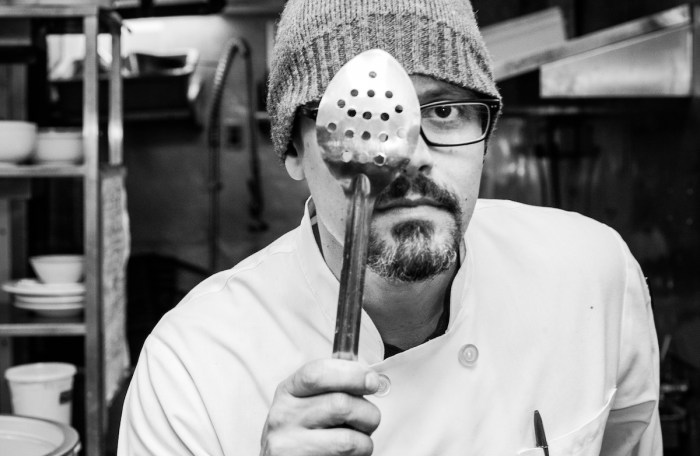Going vegan is so last year — the new trend is to eat food that’s alive.
A recent study of New England college students found that those who describe themselves as neurotic felt less social anxiety if they exercised and ate more fruits, vegetables and, crucially, probiotic foods like tofu, sauerkraut and yogurt. The microbiome has been getting a lot of attention, but research on good bacteria in our gut and its ability to influence our physical and mental wellbeing is just beginning. Fermentation is one experiment you can try easily and safely at home. We asked Tara Whitsitt, whose love of food grew into her mobile workshop Fermentation on Wheels, a bus-turned-creative kitchen in which she tours the country, to give us a primer. What hooked you on fermentation?
“I’ve always loved food; it was just a matter of time until I discovered how to ferment food,” Whitsitt says. “It all became about the power of the microbe, the idea that there is this small organism that is sustaining that food and enhancing it, flavor-wise, and also nutritionally. It’s a really simple, sustainable way of making really delicious as well as nutrient-dense food.” How safe is it?
“Food fermentation is very safe. If anything, they’re safer than canned goods because the bacteria E. colicannot survive the salty environment of the fermentation process — it cannot compete with lactobacillus.” Will it make my apartment smell?
“If you’re concerned about the smell, maybe introduce kimchi later. But sauerkraut, cucumber pickles, kombucha, sourdough, kefir — these foods don’t have a huge effect on the smell in your space.” Will it make*me* smell?
“Definitely not — if anything, it’s going to make you smell better; you’ll be healthier, and your skin is going to look nicer. You’re populating and diversifying the bacterial flora that is inside of you. You are nourishing yourself completely.” What do I need to get started?
Find a glass jar with a wide enough mouth: Fermentation is an anaerobic process, so make sure to put something into the jar (and wash it between batched) to keep the veggies under the surface of your brine.Beyond that, fermentation is “just salt and vegetables,” she says. Any maintenance required?
“If a vegetable is not submerged, it’s in an aerobic state, and mold will begin to feast on it. That doesn’t mean anything underneath is bad — it’s good, that’s why something else is eating it before you get to it,” Whitsitt explains. If that happens, scrape off the top of the sauerkraut or pull out the one vegetable that’s gotten moldy. “You have to take care of your kraut.” What should I avoid?
Yogurt (look for active cultures)Cottage cheeseKefirSauerkrautPickled vegetables (cucumbers, radishes, beets, etc.)KimchiMisoTempehSoy sauce “Temperature fluctuations are not ideal; it’s best to have a temperature-stable space, ideally between 68-76 degrees. You can ferment at a lower temperature, but just make sure it’s rather stable. If you’re fermenting at warmer and then colder temperatures, you kind of throw it into this chaotic state, so the texture could be mushy or not lovely. It doesn’t necessarily mean it will taste bad or go bad, it’s just not going to appeal to you as much.” How long doesit take?
It’s subjective and depends on the vegetable (water-heavy ones like cucumber ferment faster). Whitsitt used sauerkraut as an example: “If you like your sauerkraut milder, ferment it for a week. If you like it more sour, three weeks to a month — it’ll be funkier.” How long does fermented food stay good once opened?
“If you keep it in the refrigerator, sauerkraut can last anywhere from 6 months to a year. In the cooler temperature, the fermentation process goes dormant — it’s still fermenting but at a very very slow pace.” The flavor can change,whether itbecomesricher or fades. “Kimchi becomes way more exciting the longer it’s been in the fridge.” Just make sure you press down your ferment in the jar after each use so it remains submerged, or transfer it to a smaller jar to leave less space for anything else to grow. Eva Kis is on Twitter @thisiskis, where she talks about pop culture, cats and media almost as much as food.


















